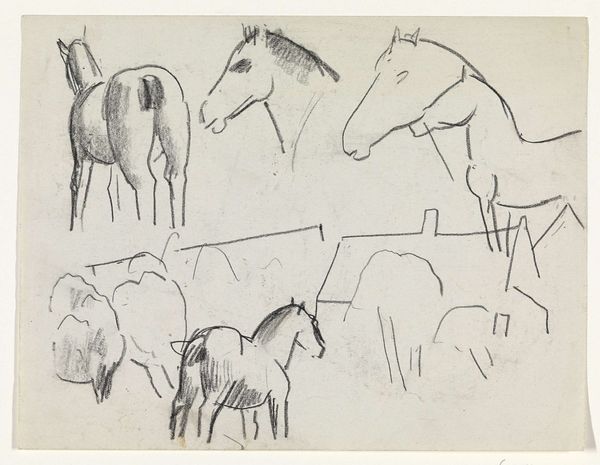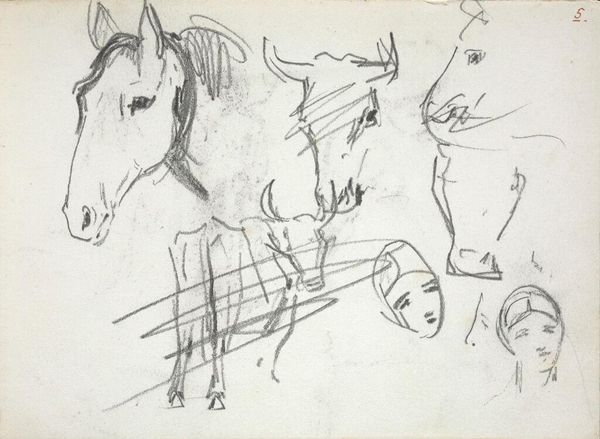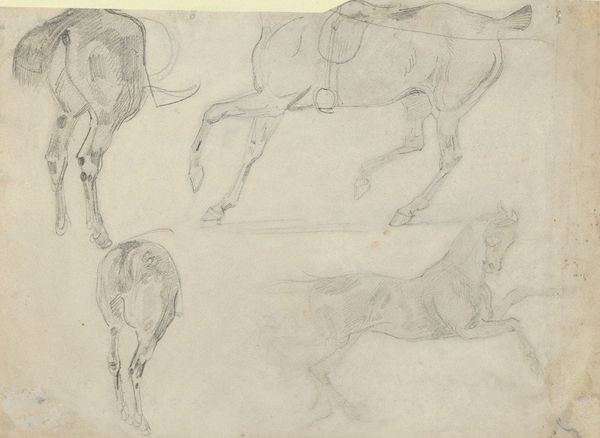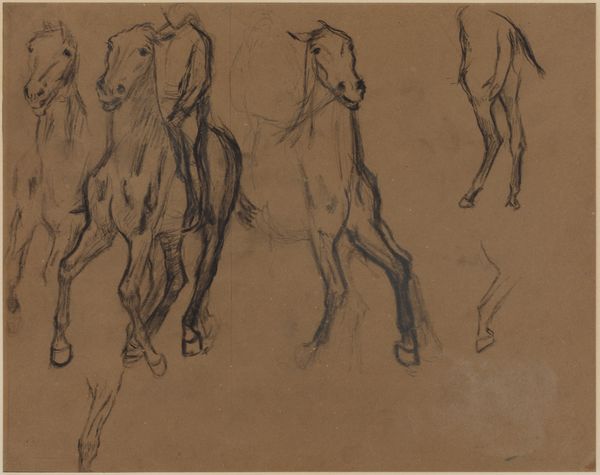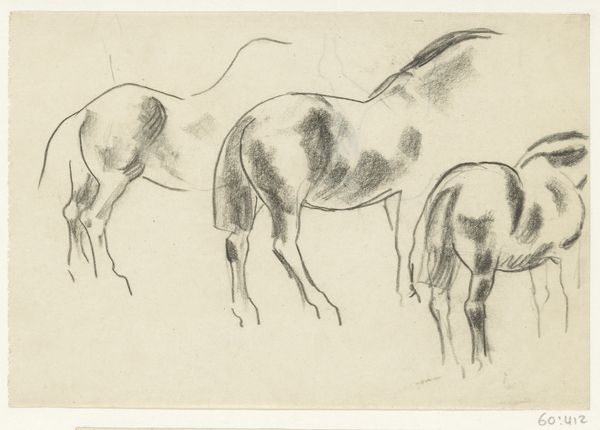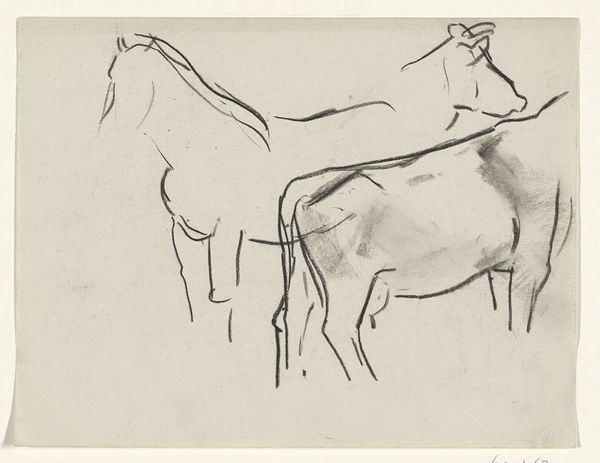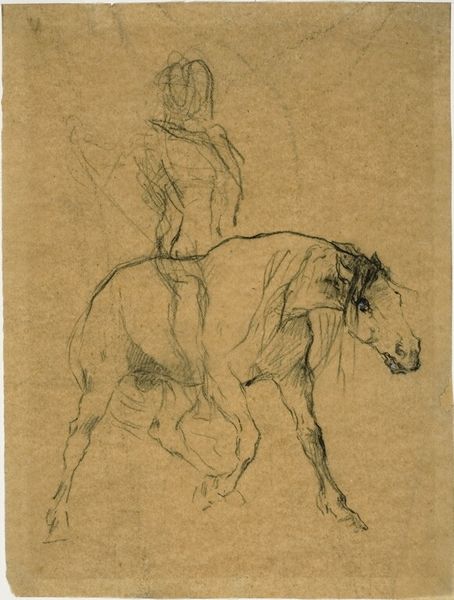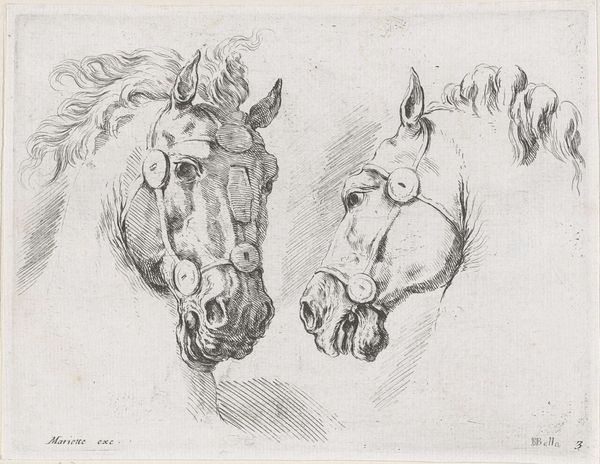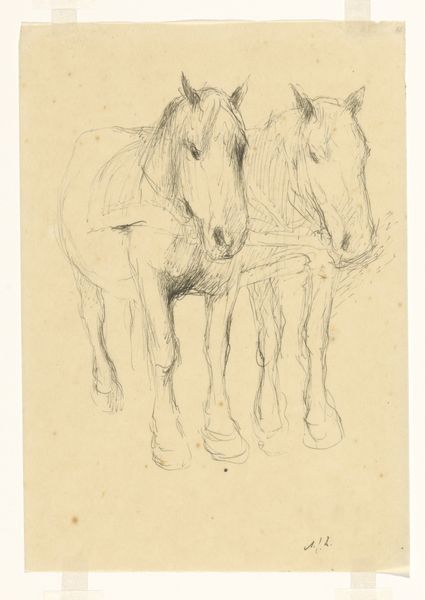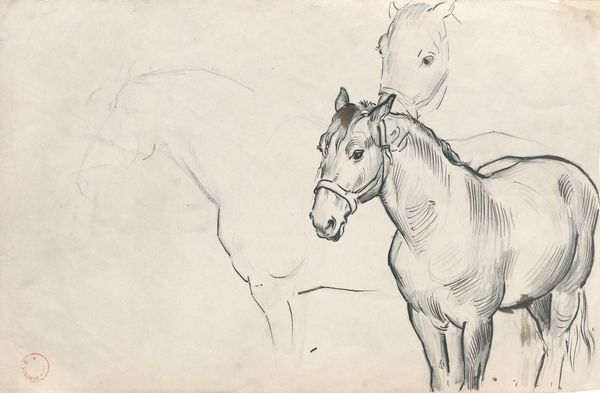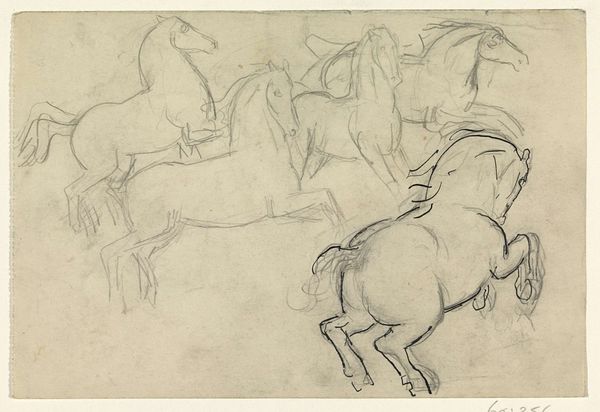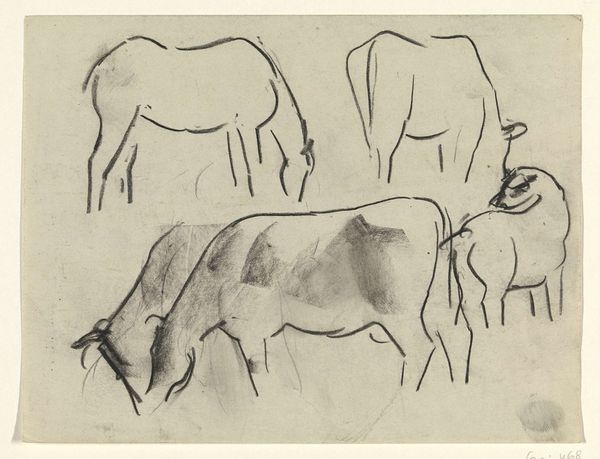
drawing, graphite
#
drawing
#
animal
#
impressionism
#
landscape
#
figuration
#
form
#
horse
#
line
#
graphite
#
realism
Copyright: Rijks Museum: Open Domain
Editor: This is "Paarden," or "Horses," a graphite drawing by George Hendrik Breitner, sometime between 1883 and 1885. I find the sketches so immediate, capturing movement. How do you read the relationship between the medium and the subject matter here? Curator: The choice of graphite on paper highlights the process of artistic production. These are working sketches, possibly studies for a larger work. Breitner was deeply invested in documenting the working class and the urban landscape. How might these depictions of horses relate to the social context of late 19th century Amsterdam? Editor: Well, horses were essential for transportation and labor then, right? So the drawing becomes about documenting the means of production of the era. It seems like a quick and unrefined rendering technique. Curator: Exactly. Think about the materiality of the drawing itself. The immediacy and roughness of the graphite reflect the daily labor the horses perform. Is Breitner elevating the working animal to fine art, or is he simply documenting its utility as another tool within capitalism? Editor: So it's almost like he's showing the horse as a commodity through his choice of materials and sketch-like style, focusing less on idealization and more on function within the city. Curator: Precisely! It's about the horse's role in the industrialized world, captured through readily available, mass-produced materials, namely graphite and paper. The artistic 'value' comes from the insight into production. How does that understanding shift your initial reading? Editor: I was focused on the aesthetic, but seeing it through the lens of material and production… it changes everything. It makes me think about how we consume images, even sketches, as part of a larger economic system. Curator: It's a powerful reminder to look beyond the surface and consider the material conditions that shape artistic creation.
Comments
No comments
Be the first to comment and join the conversation on the ultimate creative platform.
